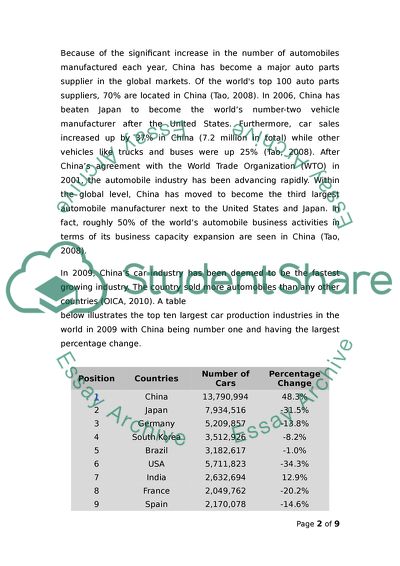Cite this document
(Automotive Industry in China Essay Example | Topics and Well Written Essays - 2000 words, n.d.)
Automotive Industry in China Essay Example | Topics and Well Written Essays - 2000 words. https://studentshare.org/macro-microeconomics/1739282-chinas-automobile-industry
Automotive Industry in China Essay Example | Topics and Well Written Essays - 2000 words. https://studentshare.org/macro-microeconomics/1739282-chinas-automobile-industry
(Automotive Industry in China Essay Example | Topics and Well Written Essays - 2000 Words)
Automotive Industry in China Essay Example | Topics and Well Written Essays - 2000 Words. https://studentshare.org/macro-microeconomics/1739282-chinas-automobile-industry.
Automotive Industry in China Essay Example | Topics and Well Written Essays - 2000 Words. https://studentshare.org/macro-microeconomics/1739282-chinas-automobile-industry.
“Automotive Industry in China Essay Example | Topics and Well Written Essays - 2000 Words”. https://studentshare.org/macro-microeconomics/1739282-chinas-automobile-industry.


